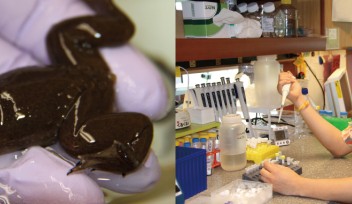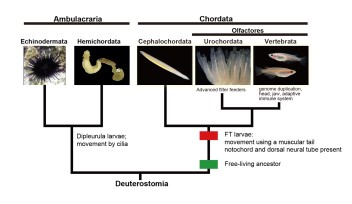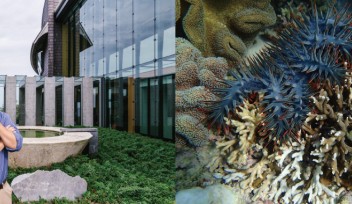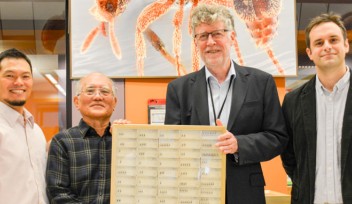“Bristle-Jaw” Creatures Finally Placed on Tree of Life
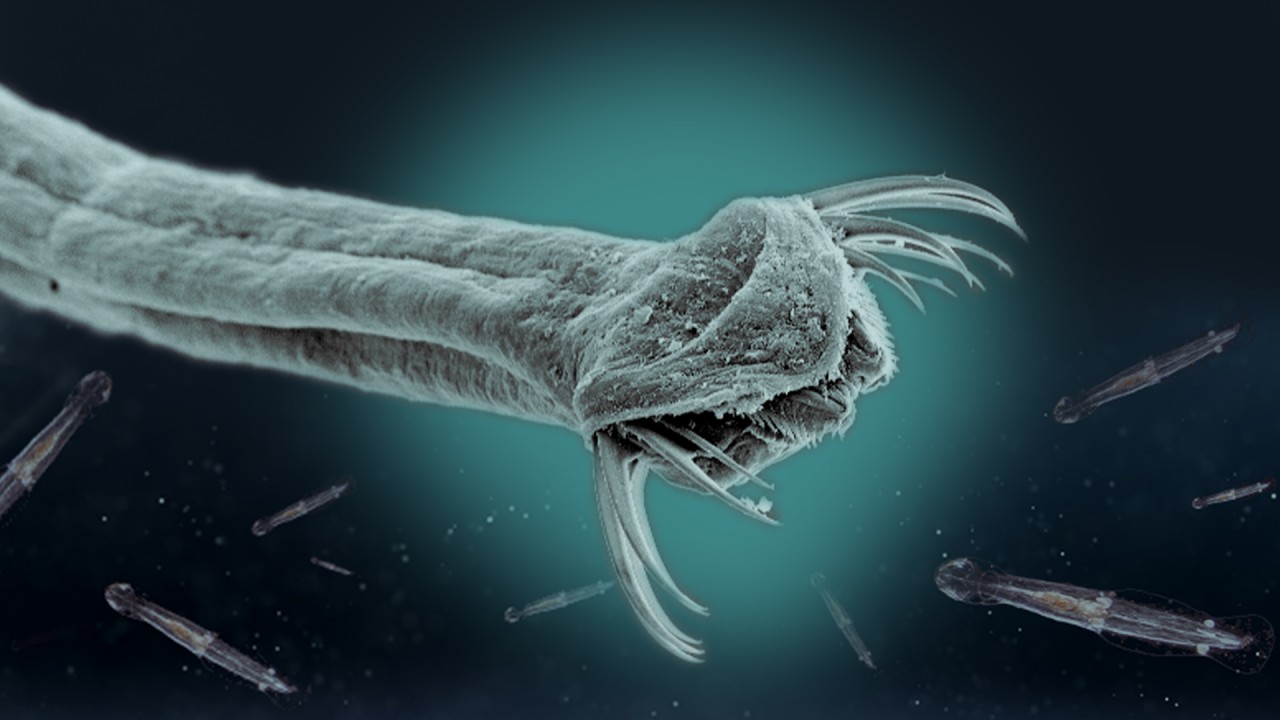
Chaetognaths, whose name means “bristle-jaw,” can be found all over world, swimming in brackish estuaries, tropical seas and above the deep dark ocean floor. Also known as arrow worms, the creatures have been around since the Cambrian Period, but their precise place in evolutionary history has long eluded scientists. Now, researchers at the Okinawa Institute of Science and Technology Graduate University (OIST) have learned where arrow worms wiggle on the Tree of Life, and their results could reveal important trends in the evolution of bilateral organisms.
The researchers sought to verify the relationship of the predatory arrow worm to other spiralia—members of a diverse group of organisms, or clade, believed to share a common ancestor. The spiralian clade includes mollusks, segmented worms and flatworms. Strikingly, the scientists found that arrow worms don’t belong with spiralians, but instead with a new group of animals that form a sister group to the clade. The results, published January 10, 2019 in Current Biology, challenge the classical view that complex organisms evolved from simple ancestors by gaining new traits over time.
“Arrow worms are predators, they have nervous systems, they have developed sensory organs. But the other organisms they’re grouped with are much simpler,” said Ferdinand Marlétaz, first author of the study and a postdoctoral scholar in the OIST Molecular Genetics Unit, led by Prof. Daniel Rokhsar. “If you place arrow worms here, it means there was probably a lot of independent simplification, rather than the independent emergence of complexity.”
Though very different in appearance, arrow worms and their phylogenetic relatives, such as the microscopic animals known as rotifers, seem to share a unique jaw structure. Composed of dense protein matrix and a fibrous substance called chitin, these jaws are situated near the organisms’ mouths and allow them to grasp their prey.
“Arrow worms group with a fairly obscure collection of small marine animals—they’re not animals most people are familiar with,” said Prof. Daniel Rokhsar, senior author of the study and principal investigator of the research unit. “The fact that these different animals had jaws that were probably related to each other wasn’t clear until this paper.”

Arrow worms from around the world
The roughly 200 species of arrow worms resemble tiny spears and range from only one millimeter long to 12 centimeters in length. The predators mostly feast on small crustaceans called copepods, using their keen vibratory sense to hunt prey and swallow them whole. The weird worm-like creatures actually share many morphological and developmental traits with other organisms, which makes their evolutionary timeline difficult to trace.
“Different animals that share the same early development are often related to each other,” said Rokhsar. One reason researchers have struggled to characterize arrow worms is that their early developmental patterns are ambiguous; they resemble patterns observed in two major groups of animals. “We really had no way of precisely classifying arrow worms one way or the other.”
The two animal supergroups are known as deuterostomes and protostomes. Both sets of organisms have a single gut running through them, from their mouths to the other end. In early development, the deuterostome gut forms from the bottom up, while protostome gut formation starts at the mouth. Though arrow worms develop bottom-up like deuterostomes, they strongly resemble protostomes both morphologically and genetically.
To clear up this discrepancy, the researchers gathered data from 10 arrow worm species and compared it to publicly available data from other animals. They examined the species transcriptomes, which serve as a snapshot of all the genes being expressed in a given cell. The scientists originally plucked their sample arrow worms from the Atlantic Ocean, the Gullmarfjord in Sweden, the Amakusa in Japan and Marseille in France. Dr. Katja Peijnenburg from Amsterdam University, Dr. Taichiro Goto from Mie University, and Prof. Noriyuki Satoh of the OIST Marine Genomics Unit assisted Marlétaz in collecting and preparing the samples.
The comparison placed arrow worms solidly in the protostome superclade within a subgroup that includes microscopic organisms known as rotifers, gnathostomulids, and micrognathozoans. Other established subgroups were shuffled around as an unintended consequence of this grouping, meaning many relationships among protostomes are now under scrutiny.
“I was a little bit surprised,” said Marlétaz. “We still don’t fully understand this association with rotifers and the others. That will be the focus of future research.”
Protostomes, past and future
The study improved on earlier work by collecting the new arrow worm data and comparing it to a representative sample of other members of the animal kingdom. The researchers also chose to focus on evolutionary lineages that had evolved relatively slowly, rather than quickly. Fast-evolving lineages tend to appear similar in analysis, even if they are barely related, so the researchers sought to avoid this bias.
Looking forward, Marlétaz hopes there will be more morphological studies of arrow worms, to connect the dots between the animals’ phylogeny and their physical characteristics. For instance, the researchers don’t yet know what genes give rise to the iconic “bristle jaw” of the Gnathifera clade, or what other specific feature might unite the group.
“We also need to look closer at the arrow worm genome,” said Marlétaz. “Arrow worms have very original genomic features, so we want to understand that better in the context of their new phylogenetic position.”
Specialty
Research Unit
For press enquiries:
Press Inquiry Form











